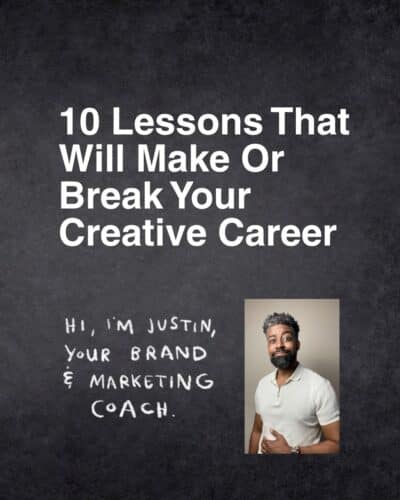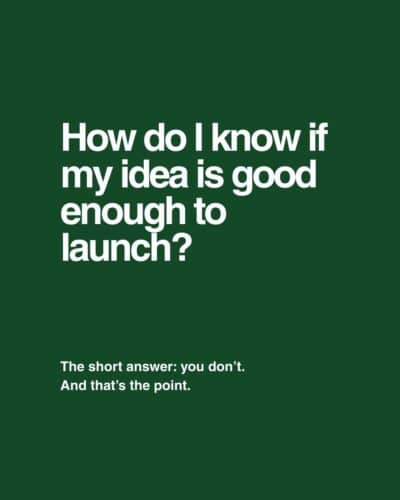Okay, so you’re creative. And you can direct stuff? You should definitely be a creative director. I got some questions on my Instagram and realized that yall are so curious about my creative career, so in today’s video I’m going to answer all your questions about being a creative director.
What does a creative director do?
Primarily a creative director is responsible for developing the creative vision for a project based on client goals and budget. This usually includes pitching concepts and working with the creative team to execute that vision.
It’s a lot more left-brain thinking than I think most people imagine.
It’s managing budgets, building timelines, sourcing freelancers, and managing cross-departmental relationships.
Then there’s reviewing the work of your team, investing in their growth, and creating a great place for them to work.
What skills do you need to be a good creative director?
There are different needs based on the internal and external function of the job.
So externally, you’re working with clients in a service-based role. So you need to be a good public speaker so you can clearly present concepts to clients in a way that convinces them to buy.
You have to be quick on your feet because you will get any number of questions from a variety of different directions.
And you need to be confident and willing to push back when necessary. This is a balancing act because while you should be an expert in your field, your client should also be an expert in their specific business or industry.
Internally, you have to have the core creative skills necessary for the company you work for.
This can vary, but in working for digital marketing agencies, I need a deep understanding of copywriting, graphic design, short form and long-form content creation, digital advertising best practices primarily for google and social ads, UI and UX design primarily for landing page creation.
And then you need interpersonal skills to make the relationships work at your company. For example, you have your core creative team. These would be your immediate bosses you’re trying to impress. And then you have the team members you’re managing. You’re trying to help them make the best work possible and set them up for success in getting the career growth that they want to be successful.
But then you also are working with other teams and department heads. In my experience, I worked closely with incredible account executives, project managers, strategists, paid media managers, and digital experience designers. And there’s so much give and take because every team is integral to the success of the project. So you’re negotiating timelines.
What was your path to becoming a creative director?
So we’ll start with the professional path and then we’ll talk through the side hustles.
I started as a web designer at a small agency. It was teeny tiny (like 5 employees), so I was doing some account management, as well as building sites and doing graphic design.
Then I worked at a large agency as a graphic designer. This was a more traditional regional agency with about 200 employees, so I had the opportunity to work on a few TV commercials, branding projects, and lots of print work.
I took a sharp left and went to get my master’s degree in arts administration because I wanted to open my own art gallery…that did not work out… So I worked at a museum and then at an arts high school for 3 years as a communications manager.
The value of going back to school was that I learned a lot about Marketing and Business and it stoked my desire to start my own company.
So I launched a design studio and did branding, web design, and marketing services. I ran that business for 3 years and this was where I learned how to manage freelancers and interns. This was pivotal in me gaining confidence as a leader and prepared me to officially use the title Creative Director.
My next job was as a creative director for a digital agency that primarily focused on online advertising and social media management. About 20 employees. And this was my opportunity to really learn how to be an empathetic leader. At this company, I cultivated the skill of genuinely investing in my team and their growth and learned how to navigate just about any creative problem that pops up.
Then I moved to Austin and worked for a digital marketing agency that had been recently acquired by a larger consulting firm. There were hundreds of employees globally, but probably 100 people in our office. This was the agency that taught me how to do design thinking workshops and just vastly increased my capacity for meaningful presentation design and incredible storytelling.
Worth noting, along the way I had a variety of side hustles that helped me to gain other professional experience.
I almost always was doing some sort of web and graphic design freelancing for almost all of my career.
I also created a local publication for millennials about the city of New Orleans. I ran that for 6 years and published 4 print issues and a few books.
I co-founded a conference for creators and was responsible for curating the experience and speakers and doing digital marketing to promote the event.
And I launched a weekly newsletter that I still run today. It’s called SoCurious and its a weekly pep talk and thoughtful recommendations that you should subscribe to.
I’m going to make a whole video about how side hustles changed my life, but that’s the general overview.
What’s your favorite part of being a creative director?
I love presenting. Its nerve-racking, but I genuinely just love the process of taking a loose idea and turning it into something meaningful that connects with the hearts and minds of people.
That’s really what advertising is. Creative storytelling with a specific goal in mind.
What your least favorite part?
Working at an ad agency is so hectic. You’re usually managing 3-4 clients at any given moment, so your focus is always split between a lot of different priorities. While I love a little chaos, I also like the opportunity to deeply reflect and have time to process. Its a fast-paced environment so there’s not always the opportunity to slow down and think.
What is it like being a black man in the agency world?
It’s interesting to be honest.. working in the agency world as a black, gay man. It has its ups and it has its downs.
Generally speaking, most of the large agencies I worked for had very few people black people working in the creative department, which can be challenging. For me, it often showed up in the references that people share. Someone on the team will make a joke about something and I just won’t get it because I haven’t seen that movie or watched that show.
And often times it would feel like I was the only person that didn’t get the reference which could be super awkward.
I made it my personal mission to connect with the other people of color at the agency and made sure to join the affinity groups and attend the meetings. These created a safe space to chat through issues and get a second opinion on the subtle and not-so-subtle microaggressions. Because even the most liberal-minded employers occasionally will say and do things that make you feel uncomfortable.
And every once in a while you will deal with clients that don’t want to work with you because they don’t expect someone that looks like you to be in this position.
For me, that pushback was fuel. I focused a lot of my attention on becoming smarter, faster, and more kind. I also made sure that everything I presented was well-researched and thoughtful. It’s hard because we live in an imperfect world. But in order to make it, especially as a person of color you have to be great to even make it in the door.
How do I get my feet in the door?
The best advice I have for someone that wants to become a creative director is to become an expert at either art direction or copywriting. And once you’ve mastered one, you need to refine your taste in the other so you can give great feedback to your team.
Coming from a design background, I focused a lot of attention on learning how to tell better stories and specifically how to write incredible headlines. This was a meaningful way to differentiate myself because I could take ideas from my team members and build on them. This inspires confidence in your capacity to review your team’s work
Outside of mastering art direction and copywriting, you also have to cultivate other skills. Mentor junior employees, take continuing education classes that are focused on business and marketing, and learn to confidently present. These skills are really the most necessary thing to growing into the role of a Creative Director.



